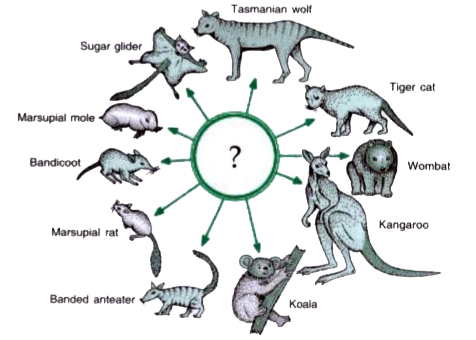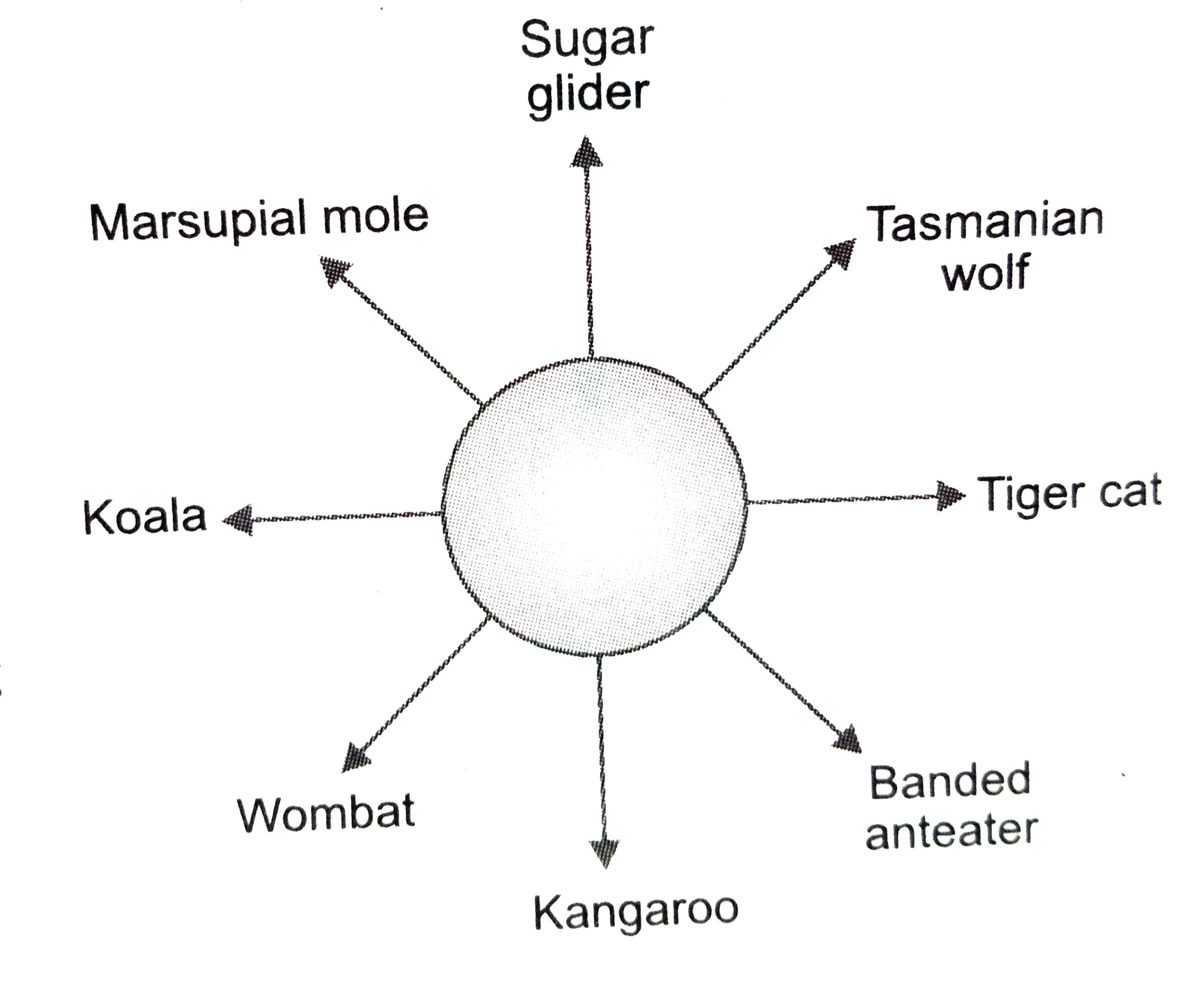Give reasons
Placental wolf and Tasmanian wolf exist-sharing the same habitat.
Step-by-Step Solution
1. Understanding the Species:
- The question refers to two types of wolves: the placental wolf (often referred to as the gray wolf or Canis lupus) and the Tasmanian wolf (also known as the thylacine or Thylacinus cynocephalus).
- It is important to note that the placental wolf is a marsupial, while the Tasmanian wolf is a placental mammal.
2. Convergent Evolution:
- The primary reason these two species can coexist in the same habitat is due to convergent evolution.
- Convergent evolution occurs when different species evolve similar traits or adaptations in response to similar environmental challenges or ecological niches, despite having different ancestral origins.
3. Analogous Structures:
- The placental wolf and Tasmanian wolf exhibit analogous structures.
- Analogous structures are features in different species that perform similar functions but do not share a common evolutionary origin. For example, both may have similar body shapes and hunting strategies adapted to their environments.
4. Morphological Similarities:
- Both species share several morphological similarities, such as body shape, size, and predatory behavior.
- These similarities arise because both species have adapted to similar ecological roles as predators in their respective environments.
5. Different Lineages:
- Despite these similarities, the placental wolf and Tasmanian wolf come from unrelated ancestors.
- This means that their evolutionary paths diverged long ago, leading to the development of distinct species that nonetheless adapted in similar ways to their habitats.
6. Conclusion:
- In summary, the placental wolf and Tasmanian wolf coexist in the same habitat due to convergent evolution, which has led to analogous structures and morphological similarities, despite their different lineages.
- The question refers to two types of wolves: the placental wolf (often referred to as the gray wolf or Canis lupus) and the Tasmanian wolf (also known as the thylacine or Thylacinus cynocephalus).
- It is important to note that the placental wolf is a marsupial, while the Tasmanian wolf is a placental mammal.
- The primary reason these two species can coexist in the same habitat is due to convergent evolution.
- Convergent evolution occurs when different species evolve similar traits or adaptations in response to similar environmental challenges or ecological niches, despite having different ancestral origins.
- The placental wolf and Tasmanian wolf exhibit analogous structures.
- Analogous structures are features in different species that perform similar functions but do not share a common evolutionary origin. For example, both may have similar body shapes and hunting strategies adapted to their environments.
- Both species share several morphological similarities, such as body shape, size, and predatory behavior.
- These similarities arise because both species have adapted to similar ecological roles as predators in their respective environments.
- Despite these similarities, the placental wolf and Tasmanian wolf come from unrelated ancestors.
- This means that their evolutionary paths diverged long ago, leading to the development of distinct species that nonetheless adapted in similar ways to their habitats.
- In summary, the placental wolf and Tasmanian wolf coexist in the same habitat due to convergent evolution, which has led to analogous structures and morphological similarities, despite their different lineages.
Topper's Solved these Questions
- EVOLUTIONBOOK - ICSECHAPTER - EVOLUTIONEXERCISE - PRACTICE QUESTIONS (Very Short Answer Type Questions)
58 Videos
- EVOLUTIONBOOK - ICSECHAPTER - EVOLUTIONEXERCISE - PRACTICE QUESTIONS (Short Answer Type-I Questions)
18 Videos
- ENVIRONMENTAL ISSUESBOOK - ICSECHAPTER - ENVIRONMENTAL ISSUESEXERCISE - COMPETITION CORNER (ASSERTION AND REASON TYPE QUESTIONS (FOR AIIMS ASPIRANTS))
9 Videos
- HUMAN HEALTH AND DISEASE BOOK - ICSECHAPTER - HUMAN HEALTH AND DISEASE EXERCISE - COMPETITION CORNER (OBJECTIVE TYPE QUESTIONS) (Assertion and Reason Type Questions (For AIIMS aspirants))
28 Videos
Similar Questions
Explain giving reasons the existence of Placental wolf and Tasmanian wolf sharing the same habitat.

View SolutionStudy the figures below and answer the following :
(a)Mention the specific geographical region where these organisms are found.
(b)Name and explain the phenomenon that has resulted in the evolution of such diverse species in the region.
(c )Explain giving reasons the existance of placental wolf and Tasmanian wolf sharing the same habitat.

View SolutionMention the specific geographical region where these organisms are found.
Name and explain the phenomenon that has resulted in the evolution of such diverse species in the region.
Explain giving reason the existence of placental wolf and Tasmania wolf sharing the same habitat.
View SolutionPlacental wolf and Tasmanian wolf marsupial exhibit
View SolutionA: Placental wolf and Tasmanian wolf (a marsupial) show convergent evolution.
R: Like marsupials placental mammals in other parts of world also exhibit adaptive radiation in evolving into varieties of such placental mammals each of which appears to be similar to a corresponding marsupial.
View SolutionTasmanian wolf and placental wolf appear similar due to
View SolutionGive three reasons why a frog and a mouse are classified in same phylum.
View SolutionTwo organisms belonging to competing species cannot live for together or co exist for long duration in the same niche or habitat. This law is called
View SolutionName an ammonium salt which is a constituent of a ] smelling salts b ] dry cells . Give reasons for the use of the named ammonium salt for the same .
View SolutionAssertion :- Tasmanian wolf and Placental wolf are the good example of convergent evolution.
Reason :- More than one adaptive radiation apperared to have occured in an isolated geographical area, (representing different habitats) one can call this convergent evolution.
View Solution
